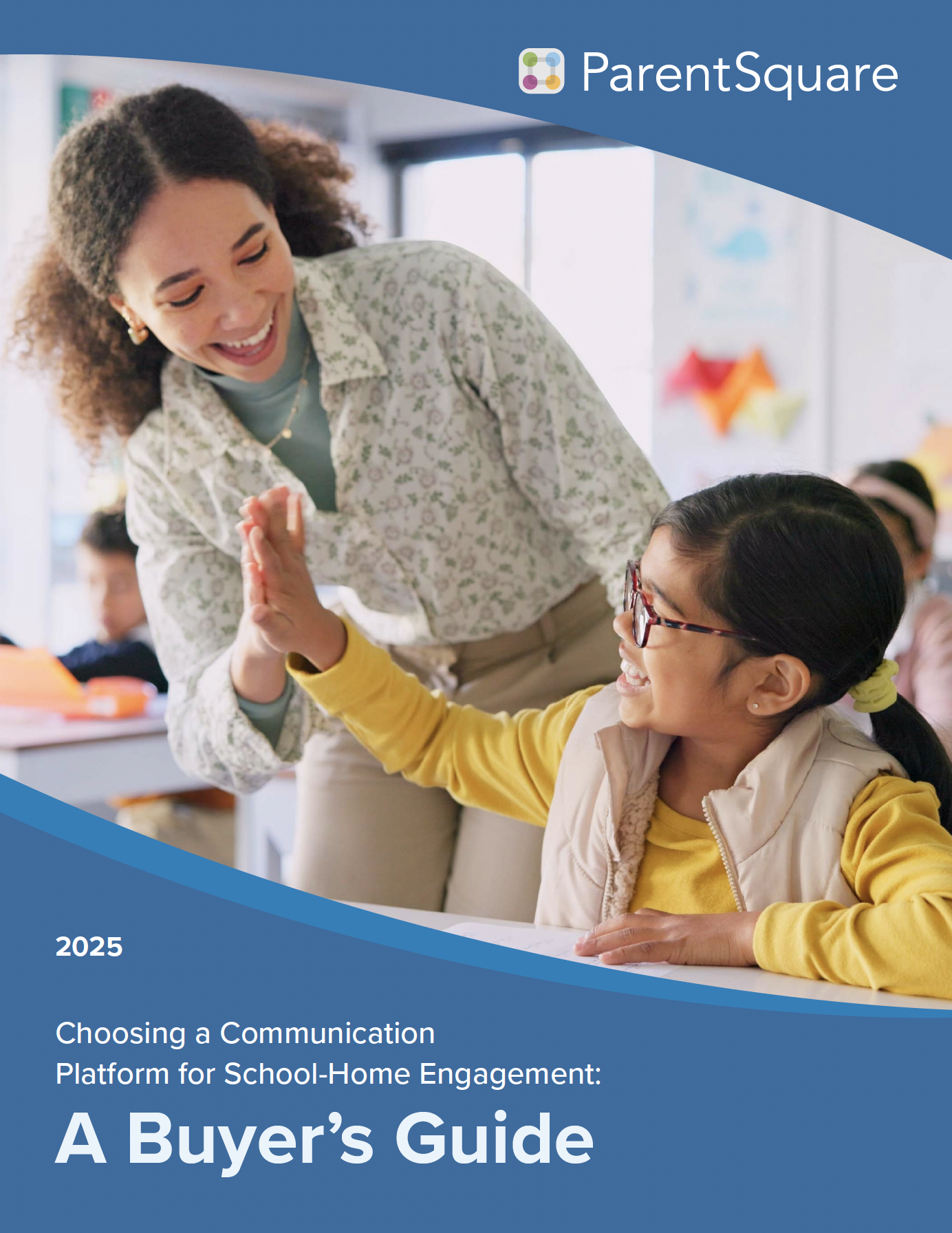
Between maintaining health and safety, recovering from learning loss, and managing communications with families, the return to in-person schooling has been a big transition for schools. The pandemic brought a new level of family engagement that many school communities had not experienced before, and it’s important for schools to maintain this momentum in engaging families as the school year continues.
We spoke with Amber Akapnitis, M.Ed., Principal of Phoenix Day School for the Deaf (AZ), Ann Marie Caballero, Principal of Fegely Middle School (IN), and Nicole Johnston, Principal of Cedar Ridge Middle School (OR). They shared their insights on family communications and discussed what they’ve learned about re-engaging families during the pandemic.
Here are some of their top tips:
- Lean into excitement, optimism and concerns so everyone feels heard.
For Amber, their school community’s energy has been completely reinvigorated. Last year was chaotic and unknown, with a lot of fear and exhaustion from staff, but this year is completely different now that the additional supports have been set in place to give staff a break. While some parents remain nervous about in-person schooling, they are making accommodations to ensure their children get the learning they need.
For Ann Marie and Nicole, similar sentiments of reinvigoration are being echoed in their communities. Students, staff, and families remain hopeful, excited, and relieved to be able to have everyone together engaging face-to-face again. - Set attainable, school-site-specific goals for family engagement.
Ann Marie’s biggest family engagement goal for the year is growing a base of parents who are in the loop. This means helping parents navigate the technology they use, offering tutorials and training to ensure communications are received and understood, and opening lines of communication to reach out and engage with the community.
Nicole’s main goal is to reach all families, so they feel connected to their school in one way or another. ParentSquare helps share that information in an efficient way with features like language translation and notifications. They are also looking to layer additional communications that are in-person or one-on-one calls to ensure greater accessibility and engagement throughout the year.
For Amber, the goal is to improve community connection and communication with the family sign language classes. Secondly, they hope to create more opportunities and events on campus for families to get involved, including more educational opportunities for families. - Creatively adapt as health and safety considerations change.
Nicole met health and safety concerns with the creative solution to hold a virtual open house this year. Utilizing ParentSquare’s Appointment Sign Ups feature, they were also able to offer individual campus tours that ensured health safety while still providing a personalized experience to minimize students’ nerves about navigating a new school or returning to a school building that no longer felt familiar after 18 months of remote learning.Ann Marie also used the Appointment Sign Ups feature to facilitate parent-teacher conferences. Since her school is limiting guests inside school buildings, her staff also creates weekly videos that are sent out to families via ParentSquare to help them feel more involved with happenings on campus.
- Tier and balance communications frequency and formats.
Amber’s approach to communications is tiered, with a regular monthly bulletin that she also offers in a video format where she signs the content in American Sign Language (ASL). Additional communications are sent out as needed.
Nicole’s method is to create a balance of communications messages to not overwhelm families with information. Her school sends out regular monthly newsletters and quick blurbs/excerpts for reminders on a consistent schedule.
Ann Marie sends out a weekly principal message video through ParentSquare to ensure communications are personal and engaging for families. Her school also keeps messaging to the end of the week, which consists of a recap and updates for the following week. - Don’t rule out the tried-and-true: face-to-face interaction and human translators.
School communities are full of families with a wide range of support needs, including parents who speak English as their second language, digital literacy challenges, and low-income families.
Ann Marie trusts ParentSquare for being able to reach a larger range of parents with the language translation feature. Their school also utilizes a translator to help bridge language gaps in face-to-face communications.
Amber’s school has ASL interpreters on staff, and typically deaf parents can come in for face-to-face conversations. For Spanish-speaking families, a Spanish interpreter is also available.
For all three webinar participants, a critical part of their job continues to be assessing their community’s needs and ensuring families get the support they need in real-time. Ann Marie is working to connect families with resources to make sure they have what they need to support their children. Amber has connected with organizations to distribute gift cards to families that are struggling financially. Nicole is reaching out to families by making home visits when possible and assessing their needs in-person.
As we shift into what we hope will soon be a ‘post-pandemic world,’ it’s important that schools are finding ways to re-engage with families and support their school community as new needs arise.
We thank our panelists for the valuable conversation and insight into this critical topic. To view the conversation in its entirety, check out the webinar recording here.







